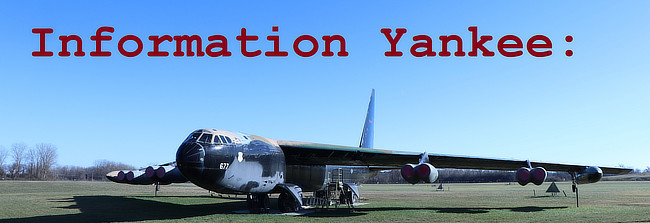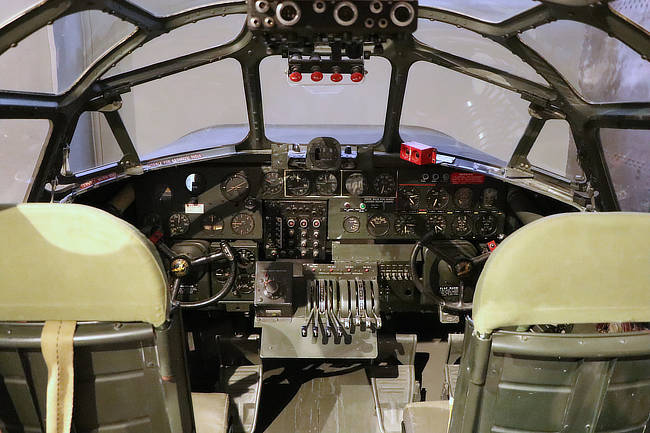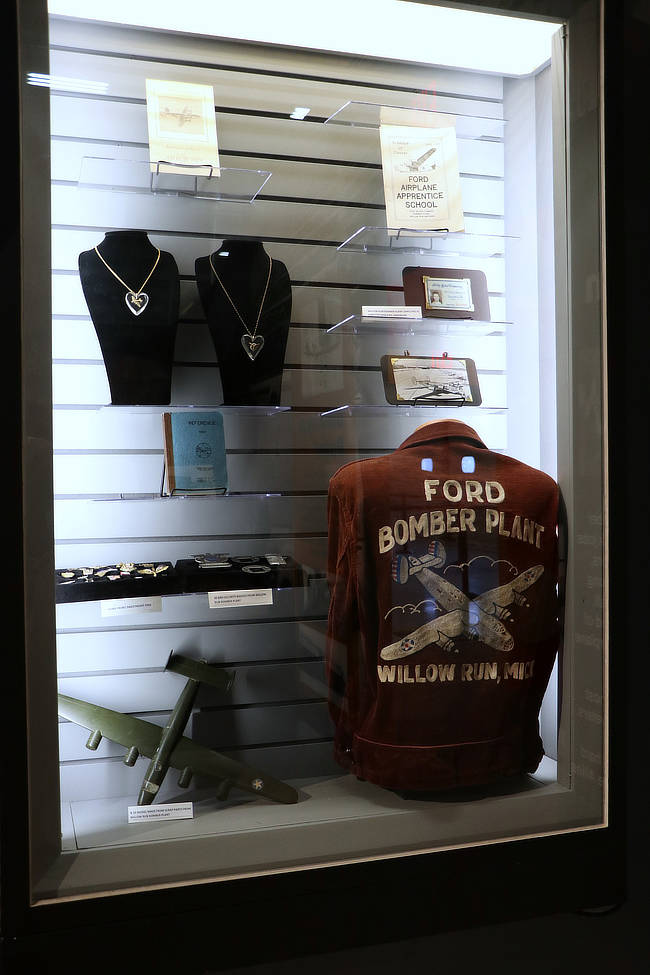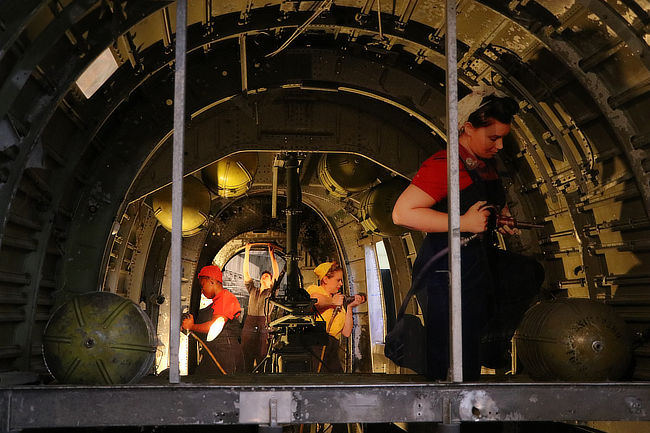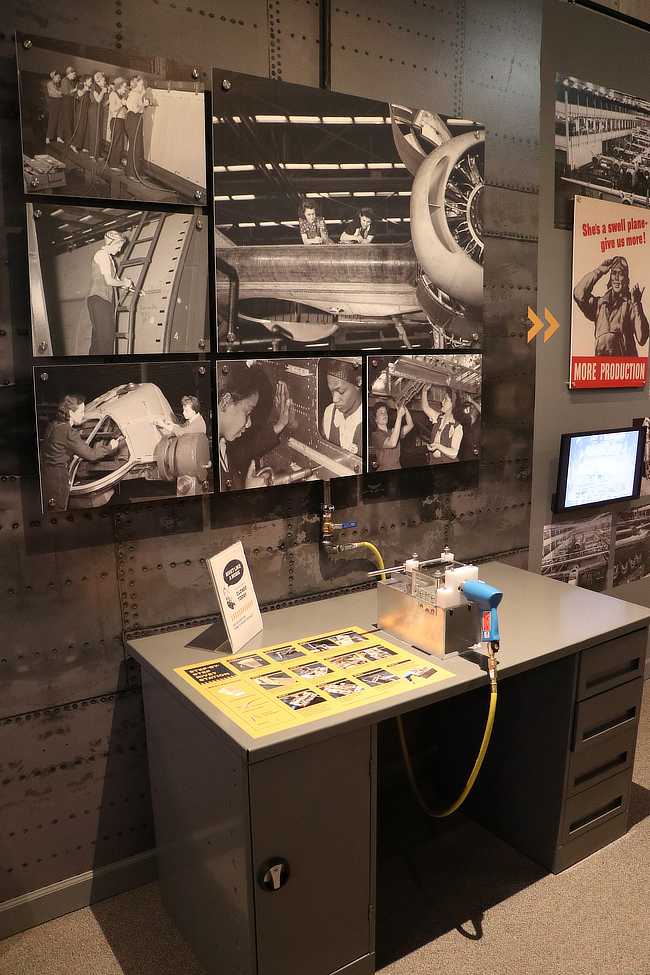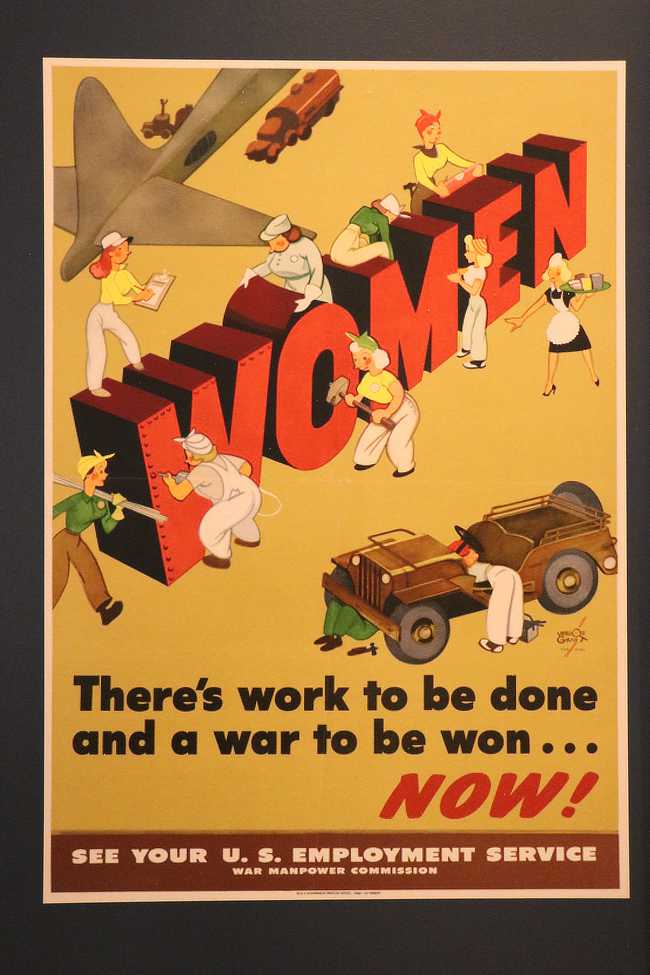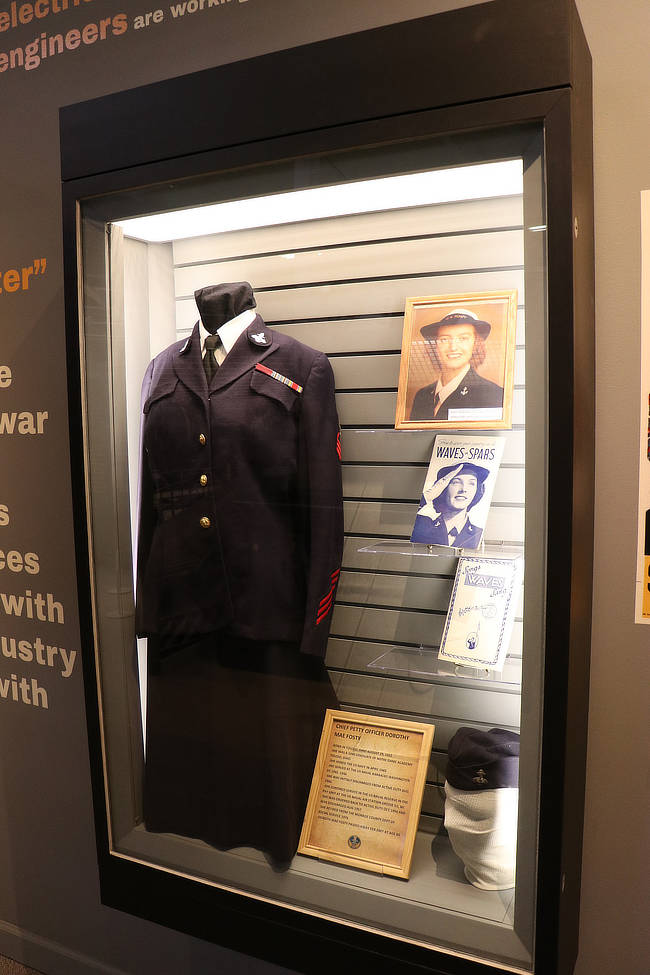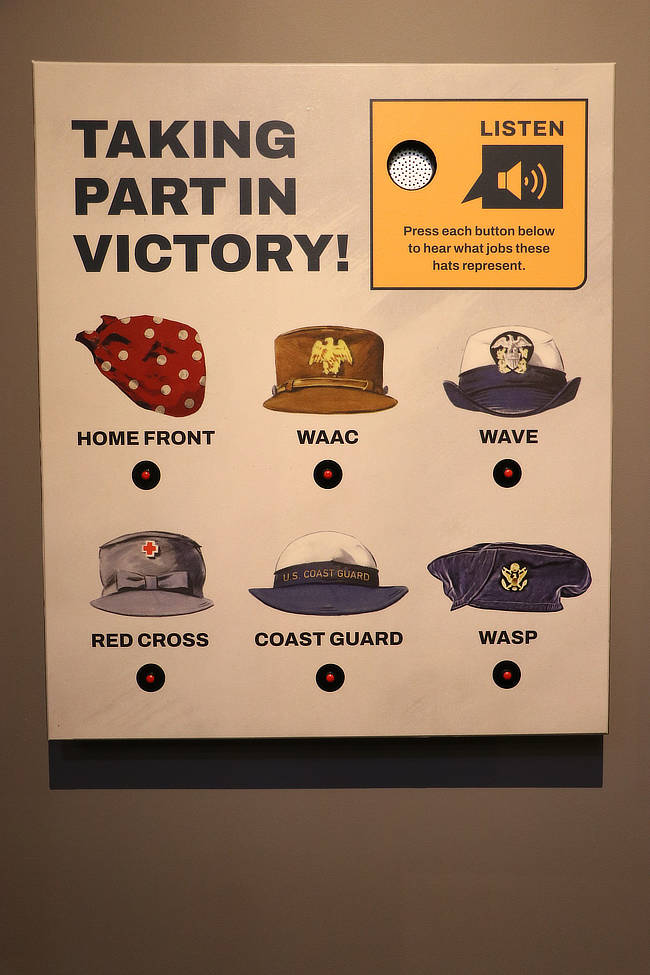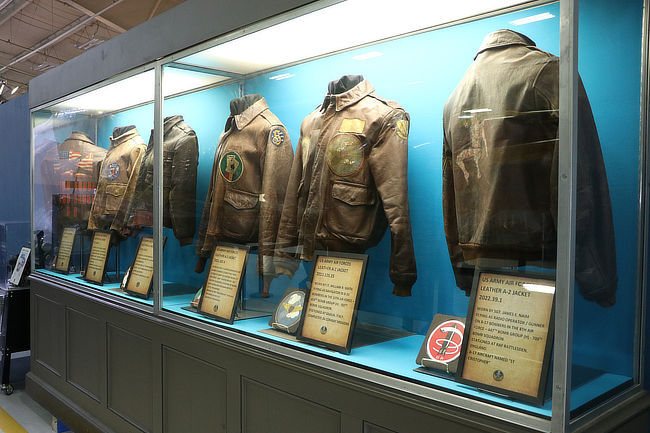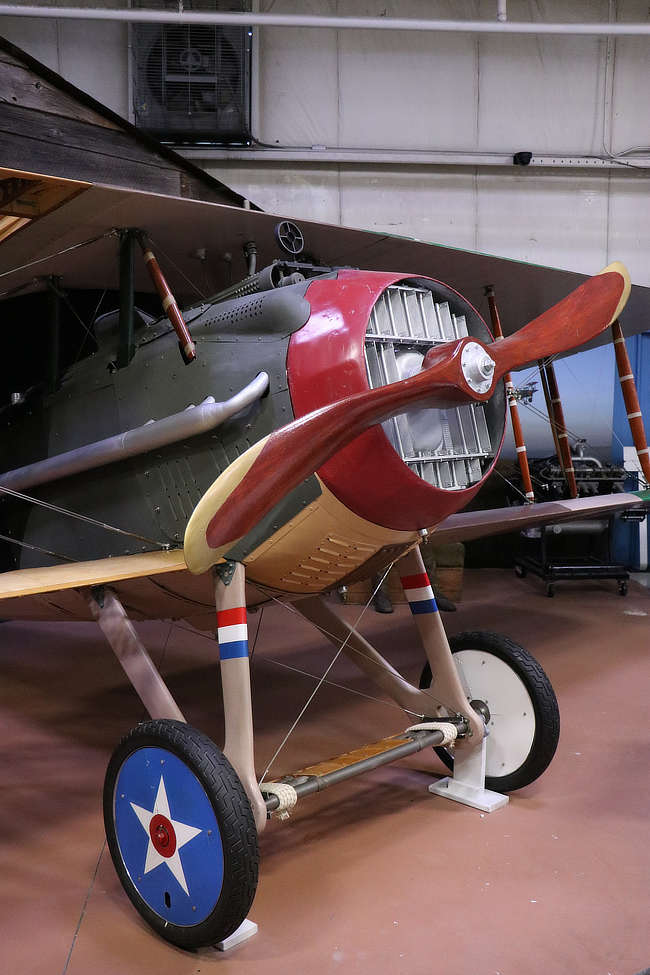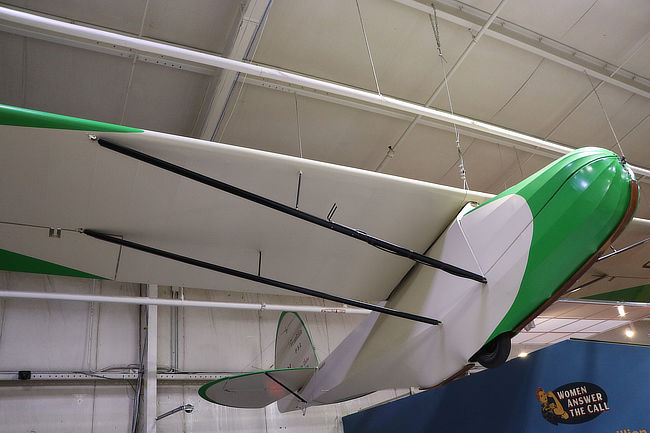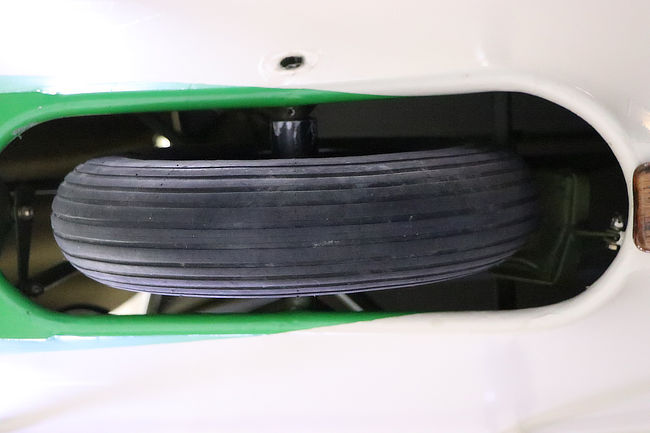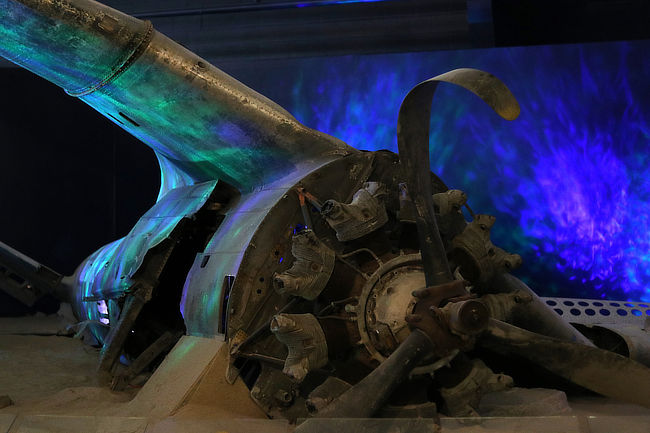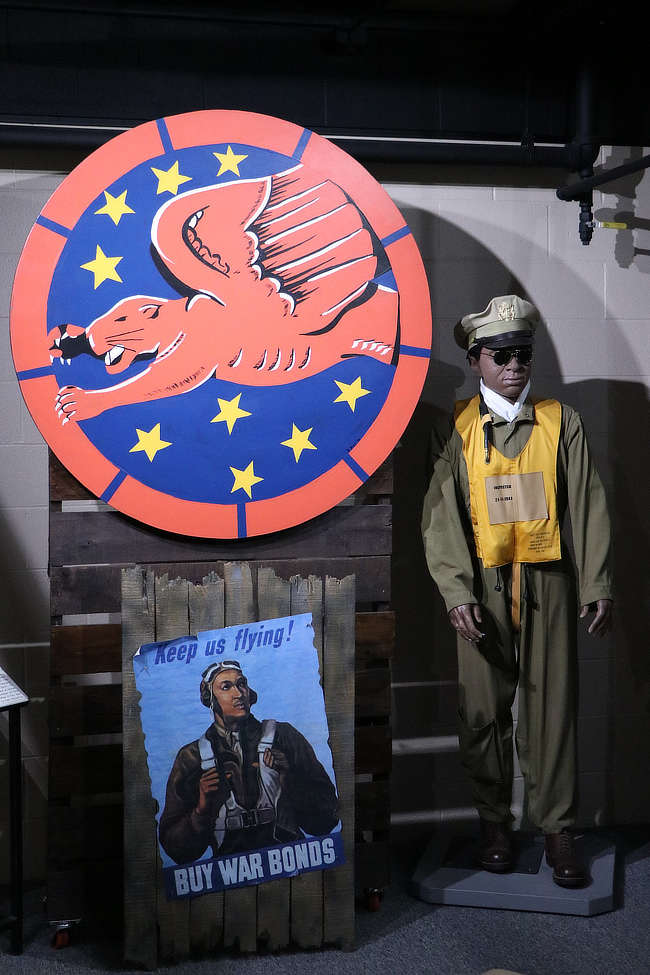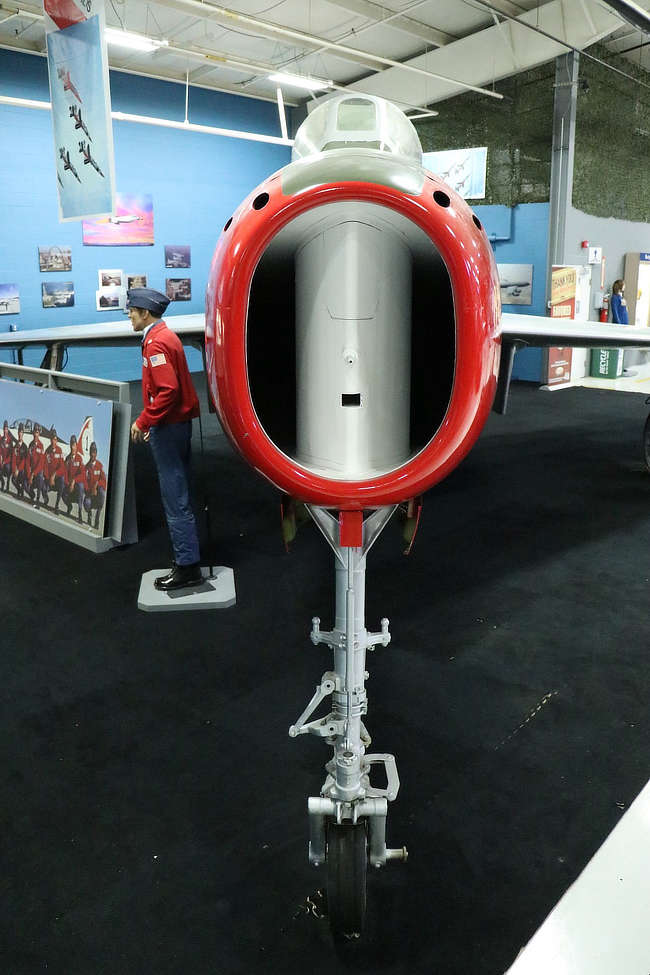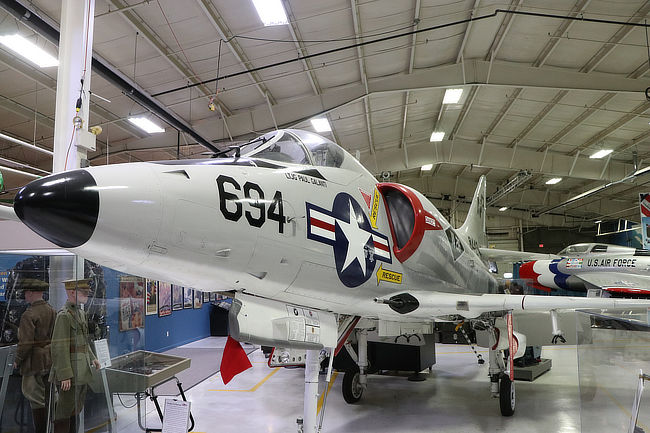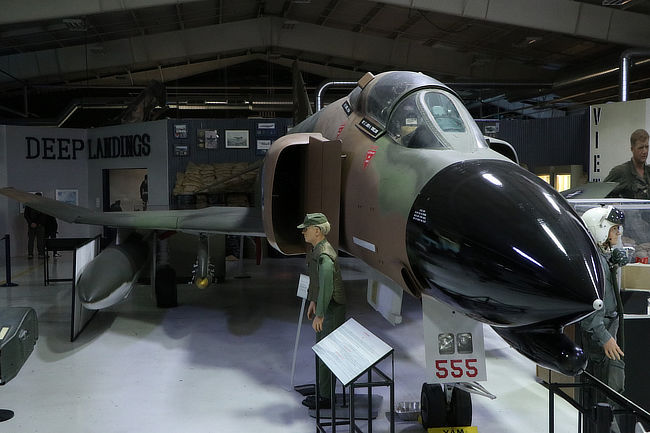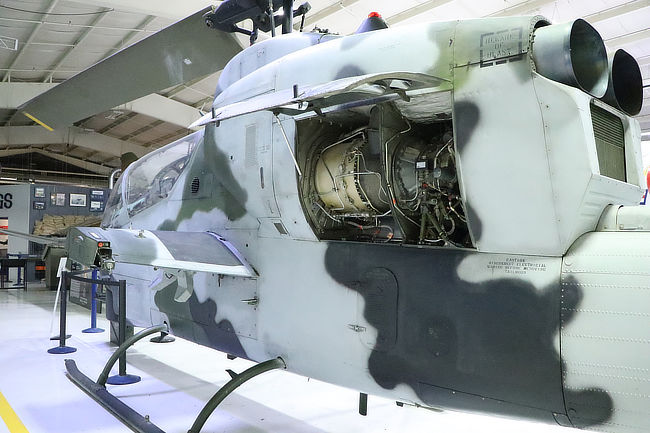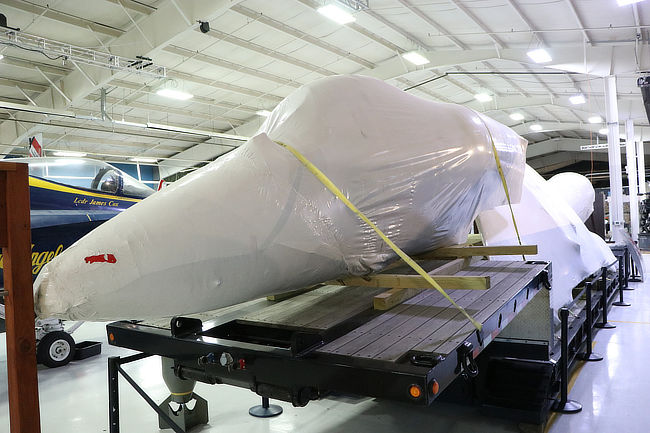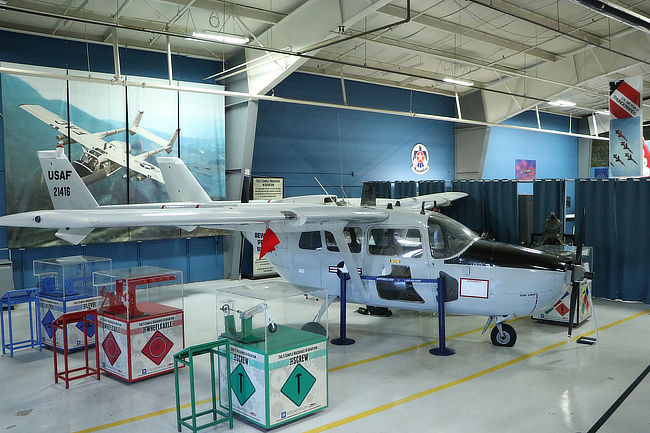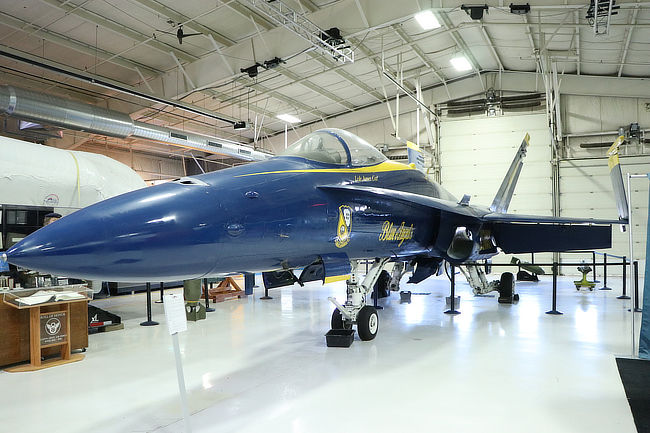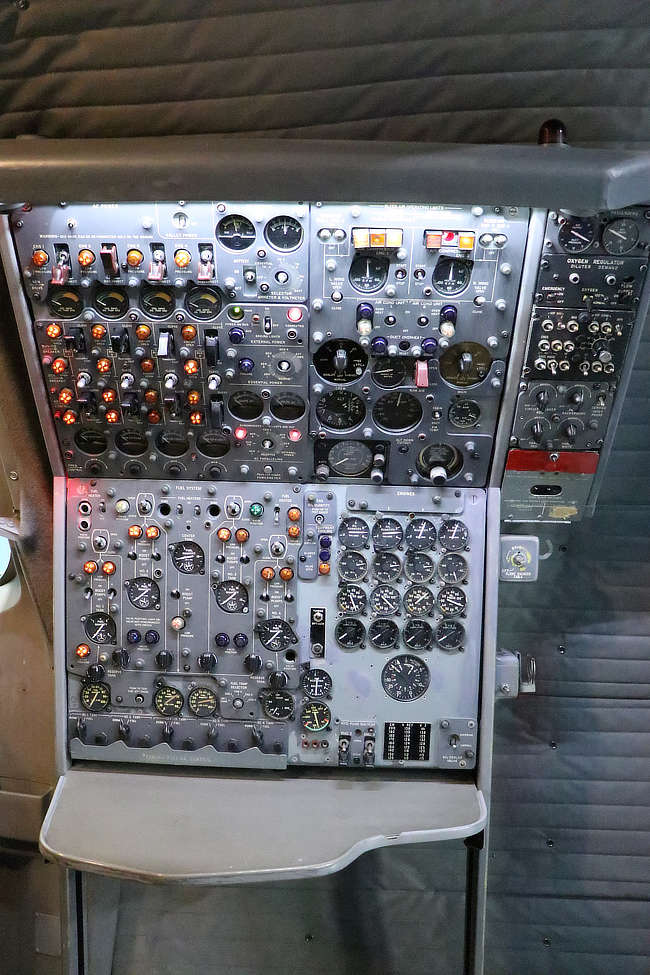ISSUE 845 - January 2, 2024 • Over 7,000 Total Ads Listed • 1,000+ NEW Ads Per Week
This eFlyer Has Been Sent To Over 152,000 Subscribers |
| Information Yankee |
| Ben Keirn, Contributing Writer & Photographer |
|
Michigan as a state has a rich history. Not only are they proud of the achievements of their citizens, they're also happy to put those achievements on display. All across Michigan there are monuments and museums celebrating everything from presidents to industrialists and activists to ordinary citizens who rose to the occasion in order to meet a need. Near Ypsilanti and Belleville Michigan lies an airport where many of these came together. Under the shadow of war, an industrialist built a bomber plant, a president toured and celebrated it, ordinary citizens staffed it, and activists rallied behind what happened there.
Willow Run airport (KYIP) lies just outside of Ypsilanti, Michigan, which explains the three-letter identifier. The name of the airport has a little more history to it, though. On these grounds the Willow Run Bomber Plant was built by the Ford Motor Company under the guidance of Edsel Ford, the son of Henry Ford. The plant was purpose-built to produce aircraft in an assembly line. And the aircraft? The massive B-24 Liberator.
|
|
| The front office of a B-24, built at Willow Run, allows visitors to see not only the intricacies and myriad parts of the assembly, but also the view the pilots would eventually see. |
|
| Willow Run plant paraphernalia on display includes employee pins, ID badges, manuals, and even a "Bomber Jacket." |
|
The Willow Run Bomber Plant was visited in September of 1942 by then President Franklin D. Roosevelt and First Lady Eleanor, along with Henry Ford. The plant opened for business only one month earlier in August of that year. Willow Run was increasingly staffed by women who definitely rose to the occasion, fulfilling the wartime labor needs. And to give a sense of scale, the plant was so massive that President Roosevelt toured the interior in his limousine, "Sunshine Special." Mr. Ford was likely happy, since the limousine was produced by Lincoln, which he owned by the time of the tour.
Across the airfield from the former assembly plant now stands the Yankee Air Museum. The museum celebrates military aviation and the people who have made it possible from WWI thru the modern era. Along with each aircraft, the displays tell the story of the pilots and crew. But a recent addition to the museum tells the story of the women in the workforce and military who helped build, arm, and deliver the resources necessary for wartime pilots. An amazing achievement, these unsung wartime heroes were manufacturing one B-24 every 63 minutes at Willow Run. Then they tested, transported, and delivered them ready for action.
|
|
"Rosies" riveting away; the B-24 fuselage on display shows women doing their part
for the war effort. |
|
| Care to try your hand? The museum has several interactive displays, including your chance to rivet like a "Rosie." |
|
Several posters of the era are on display calling the women "to arms"; while their husbands, fathers, and uncles were called to arms, the war commission called the women
to serve with their arms. |
|
The museum doesn't just tell the Willow Run story on storyboards. They also have a B-24 fuselage section on display showing the various roles of the women at the Willow Run plant. Though the plant has long since stopped producing aircraft, the legacy lives on. Much of what happened in the wartime workforce paved the way for women to seek equal work opportunities after the war. Of course, women had already been flying from the time airplanes were invented, so it stands to reason they would be flying aircraft during the war.
|
|
| Give a wave to the WAVES, the Women Accepted for Volunteer Emergency Service. |
|
| WAVES weren't the only women pilots during WWII, they were the US Navy equivalent of the WASP (Women's Airforce Service Pilots), women also served in the WAAC (Women's Army Auxiliary Corps), Coast Guard, Red Cross, and, of course, in factories on the home front. |
|
Where would airplanes be without their crew? In addition to the uniforms of women who tested and transported the aircraft, the museum holds some of the flight jackets of the men who flew them into battle. Whether fighters or bombers, pilots cherished their flight jackets, and each was customized for the pilot, crew, or squadron they belonged to.
|
|
| Bomber's jackets on display! In addition to the look-alike bomber jacket from the Willow Run Plant, the museum has several preserved jackets from bomber crews. |
|
Of course, our readers who are pilots are likely impatient for airplanes by this point. The Yankee Air Museum does, of course, have airplanes. The museum operates a handful of airworthy aircraft used for Air Adventures. Their B-17 "Yankee Lady", B-25 "Rosie's Reply", C-47 "Hairless Joe", and UH-1 Huey are housed at their Roush Hangar on the KYIP airport's east ramp. Outside the Roush Hangar sits their decidedly unairworthy B-52, shown in the header photo. Just a little up the road and on the opposite side from the ramp operations is the main museum, housing their remaining aircraft on static display. The earliest plane represented is a SPAD used during WWI by the Hat in the Ring Squadron.
|
|
| The World War I display, with this SPAD S.XIII replica, shows a moment in the life of the "Yankees" flying in Europe, like WWI ace Eddie Rickenbacker. |
|
Representing the golden era of aviation and the boom in private aviation is a glider built in the 1930's. In the post-war years, there was a surge of interest in aviation and eventually in gliding as a sport and hobby. Sailplanes were manufactured by several companies around the world, including the Franklin Glider Corporation (no relation to the Franklin Engine Company). It was the perfect form of flying in the era of the great depression in the United States. Friends could pool their money and get a glider and a car to tow it skyward. As a matter of fact, the Franklin Glider was designed and tested as part of the University of Michigan Glider Club.
|
|
The museum's Franklin PS-2 hangs powerless from the rafters, but that's okay,
it's always been powerless. |
|
| Whether a car, catapult, or tow plane got the PS-2 going, all the pilot had was a humble friction pad when it was time to put the brakes on. |
|
The museum moves into the Second World War with a rather unique static display. Their SBD Dauntless was found resting in the floor of Lake Michigan after a "deep landing" from a training facility in Illinois. Rather than attempting to restore the plane to its flying glory, the curators chose to preserve the plane "as is." With so many planes finding their resting places under the ocean, this display brings home the dangers of war, whether training, transporting, or flying in the Pacific Theater.
|
|
| The Yankee Air Museum affords visitors the unique opportunity to explore a submerged airplane wreck sans scuba gear. |
|
Not every pilot during WWII was welcomed with open arms. In an era when pilots were hard to come by and women weren't allowed to serve in battle, there were still some who wanted to turn their backs on pilots who were both willing and able to serve. The Yankee Air Museum has a display dedicated to the colored men and women who served their nation and the world against all odds. In manufacturing, ferrying, and testing, the Rosies, WAVES, WASPs, and WAACs had their counterparts in the colored community. And while there has been much presented in print and film, there are still some who might be surprised to learn of the achievements, skill, and discipline of the pilots known as the Tuskegee Airmen.
|
|
| "A rose by any other name would smell as sweet", and a fighter of any other color would be as much a sight for sore eyes if they are protecting your bomber from the enemy. |
|
Continuing the tour of the museum, there is a transition from WWII into the modern era. While there are no planes of the Korean War era in battle colors, there is an F-84. The museum houses historic artifacts of the US Air Force Thunderbirds, with the F-84 front and center in the display. Almost but not quite; right era, wrong colors. Similarly, the A-4 Skyhawk on display spanned several decades of service with the US Navy and Marines. Almost but not quite, right decade, but delivered too late for the Korean War. The museum's A-4 is a C model painted in the US Navy livery. As with most aircraft displays, the museum honors and tells the story of a real-life A-4 pilot. In this case, the plane is painted to represent the aircraft of Vietnam era pilot Paul Galanti. Galanti was shot down in his A-4 after 97 successful combat missions and was imprisoned as a POW in Vietnam for nearly seven years.
|
|
| This Thunderstreak represents the USAF Thunderbirds; there is little more than an engine and wings on this Korean War era fighter jet! |
|
| A Skyhawk of a different variety, this is a little bigger than your Cessna. |
|
The Yankee Air Museum collection seems to shine in the Vietnam era. In addition to the A-4 Skyhawk, they house an F-4 Phantom II, a Bell AH-1J SeaCobra, and the aforementioned flying UH-1 Huey. They also have a second A-4 Skyhawk, though it is under wraps. The second Skyhawk is in the colors of the US Navy Blue Angels, but is said to be moving on to another museum soon to make room for a new aircraft coming this way. While no fighter, the diminutive O-2 was able to bring the fight to the enemy in the low-level battles of the Vietnam War. It is also surrounded by an interactive display allowing visitors to see how the various controls of an aircraft work.
|
|
| The Navy seems to have a propensity for bent wings; the F-4 Phantom on display has both a name and wing profile to match an earlier Naval aircraft, the F4U Corsair. |
|
| Open up and say "AH", the engine bay of the AH-1 SeaCobra is open for inspection. |
|
| Not all aircraft are on display, some are under wraps and ready to go to a new home, like this A-4 in the Blue Angels livery. |
|
| Perhaps it's more of a scrapper than a brawler, but it does have two of everything; two wings, two engines, two tails, must have been a two for one deal when they designed the O-2. |
|
For those longing to look under the shrink wrap, you're out of luck. By the time you visit the Yankee Air Museum the Blue Angels A-4 will be on its way to a new home. But if you paid attention to the earlier photo of it under wraps, you already know that there is a Blue Angels plane staying with the museum. The Yankee Air Museum has an F-18 on display in Blue Angels colors. For those keeping track for the home game, the museum has on display three aircraft models that were flown by the Blue Angels, the F-18 in appropriate paint, the A-4 in Navy colors, and the F-4 in jungle camo. Makes you wonder if they've any plans to bring in one of the cats that the Blue Angels flew prior to the Phantoms.
|
|
Another twin tail, but instead of another Skymaster or "forked tail devil" (P-38),
this F-18 is an Angel. |
|
One of the great benefits to visiting the museum in person is the plethora of interactive exhibits to keep younger visitors interested. The museum houses simulators, interactive tools, aircraft controls, and a handful of cockpits for visitors to look inside. If you thought the B-24 cockpit looked complicated, you've got a surprise coming. Time, technology, and capabilities have led to aircraft that are more complicated by far. But it's not what you'd think. Rather than a fighter or bomber, the complex aircraft is a gas station of the sky. The museum has the cockpit of a KC-135 for visitors to walk in and see the modern era. All of the thirsty aircraft of today's battlefield in the sky need a drink from time to time. And while the controls and switches on the main instrument panel of the KC-135 are dizzying to look at, the flight engineer's station is downright confounding. Flying around in an aircraft intended to refuel others, it appears it would take a master's degree to keep ahead of the fuel management on this bird!
|
|
| The engineer's station or gas station in this "gas station in the sky" will keep most visitors occupied just trying to figure out how not to run out of fuel. |
|
The Yankee Air Museum offers quite a lot for the intrepid visitor willing to brave a Michigan winter to learn a little aviation history. Along the way you'll learn a lot about Michigan history and how a president, industrialist, activists, and ordinary citizens rose to the occasion in order to meet the needs of their nation and the world. If you wait until warmer weather, there will be ample opportunity for an Air Adventure between May and October. And if you just can't wait that long, take a look around the Barnstormers.com website for a plane of your own and make your own air adventure as you fly it up to KYIP to visit the Yankee Air Museum.
|
| By Ben Keirn, Contributing Writer & Photographer |
|
| |
|


